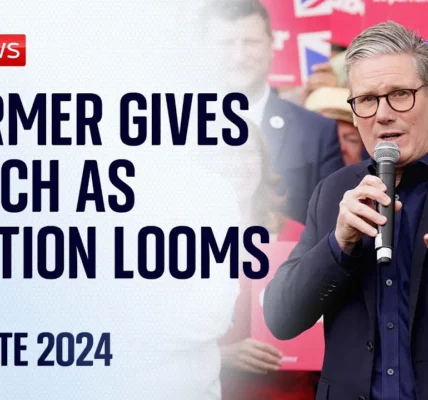NATO’s Response to Global Security Challenges and Support for Ukraine

This article provides an in-depth analysis of NATO’s defense strategies and its collective response to Russian aggression against Ukraine, emphasizing the alliance’s commitment to maintaining global security and democracy.
Introduction
In the year 2020, a significant shift occurred in global military dynamics as only nine NATO allies were spending 2% of their defense GDP. However, by 2023, this number has risen sharply, with 23 countries committing to at least 2% of their GDP on defense. This progress highlights NATO’s deepening commitment to collective defense against aggression, particularly in the face of ongoing threats from autocratic regimes and terrorist groups. The alliance’s readiness to respond across all domains—land, air, sea, cyber, and space—demonstrates a robust strategy aimed at ensuring the security of its member nations and the preservation of democratic values worldwide.
The Rising Commitment to Defense Spending
As NATO adapts to evolving geopolitical threats, the increase in defense spending among member nations is a crucial development.
Current Defense Spending Trends
- In 2023, 23 NATO countries are expected to meet the 2% GDP defense spending target.
- Several nations are projected to exceed this benchmark, reflecting their commitment to NATO’s collective defense.
- This increase in spending is essential for maintaining operational readiness against potential aggressors.
Importance of Defense Spending
Investing in defense not only strengthens national security but also enhances NATO’s collective capabilities. Key areas of focus include:
- Modernizing military equipment and technology.
- Increasing troop numbers and deployment readiness.
- Enhancing joint training exercises among member states.
NATO’s Collective Response to Russian Aggression
The ongoing conflict in Ukraine has catalyzed a unified response from NATO, demonstrating the alliance’s commitment to protecting democratic nations against authoritarian threats.
Support for Ukraine
Ukraine has received substantial support from NATO allies, which has included:
- Military assistance in the form of weapons and equipment, including tanks and air defense systems.
- Humanitarian aid to assist civilians affected by the conflict.
- Economic support to stabilize Ukraine’s economy amidst the crisis.
Strategic Military Enhancements
In response to the Russian invasion, NATO has significantly increased its military presence in Eastern Europe.
- The United States has deployed over 100,000 troops to Europe.
- NATO has reinforced its Eastern flank by doubling the number of battle groups in the region.
- New air defense systems have been introduced to protect against potential threats.
The Global Coalition for Ukraine
NATO has formed a global coalition of allies to provide comprehensive support to Ukraine, showcasing a united front against aggression.
Bilateral Security Agreements
Numerous countries have entered into bilateral security agreements with Ukraine. Key features include:
- Sharing intelligence and resources to enhance Ukraine’s defensive capabilities.
- Coordinating military training programs for Ukrainian forces.
- Establishing frameworks for ongoing support and cooperation.
Humanitarian and Economic Assistance
The coalition is not only focused on military aid but also on humanitarian efforts, providing:
- Food and medical supplies to affected populations.
- Financial assistance to stabilize the Ukrainian economy amidst conflict.
- Refugee support for those displaced by the war.
Conclusion
In summary, NATO’s response to the ongoing challenges posed by Russian aggression reflects a commitment to collective defense and the preservation of democracy. The alliance has demonstrated remarkable adaptability and resilience, ensuring that Ukraine receives critical support while reinforcing its own strategic capabilities. As we look to the future, it is clear that NATO remains a cornerstone of global security. The resolve shown by member nations underscores the importance of unity in the face of adversity. We encourage readers to stay informed about NATO’s ongoing initiatives and support efforts to promote peace and security worldwide.
For more information on NATO’s defense strategies and updates on the situation in Ukraine, visit our related articles on military alliances and global security.
“`




